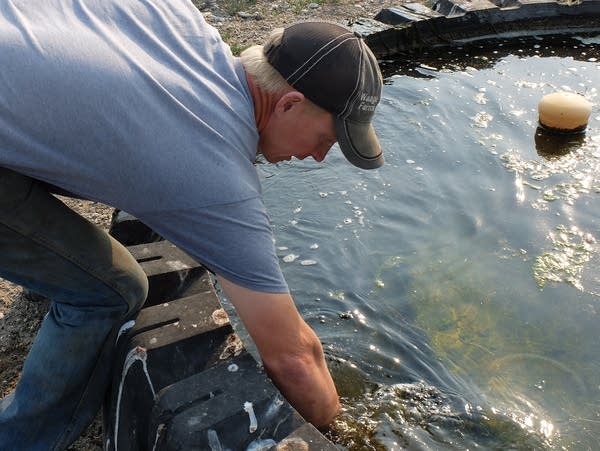Despite drought Minnesota farmers fared well in 2021

Go Deeper.
Create an account or log in to save stories.
Like this?
Thanks for liking this story! We have added it to a list of your favorite stories.
Despite drought conditions that affected much of Minnesota last year, farm profitability improved for the second year in a row, after seven years of economic struggles.
“Surprisingly enough, I think for most folks this was the second highest profitability for farms on an inflation adjusted basis for Minnesota.” said Pauline Van Nurden, an Extension Economist at the University of Minnesota Center for Farm Financial Management, discussing a survey comparing farm financial data collected since 1996.
All farm types in Minnesota saw positive net farm income for the second year in a row.
Turn Up Your Support
MPR News helps you turn down the noise and build shared understanding. Turn up your support for this public resource and keep trusted journalism accessible to all.
Farmers participating in the survey represent about 10 percent of Minnesota farms that have gross annual income exceeding 250,000 dollers.

In 2020, farm profits were largely the result of expanded government payments related to trade disputes and the coronavirus pandemic. Government payments fell by about 50 percent in 2021 according to Van Nurden, but farm income grew because of higher commodity prices.
“We saw commodity prices, especially for grains, continue to increase throughout the year, but even pork and beef prices were stronger that the previous year,” she said.
Corn and soybean harvests were generally better than expected in 2021, said Van Nurden, because timely rains and improved crop genetics offset some of the anticipated drought impact.
The higher prices for grain crops meant increased feed costs for livestock farmers, but most hog and beef producers still had improved earnings over the previous year.
Dairy farms saw a slight decline in profitability in 2021 because of lower milk prices, and cattle farmers paid more for good quality hay that was in short supply because of the drought, adding to expenses.
But improved profits for most farmers led to increased working capital and lower debt, positioning farmers well for what could be a volatile 2022 because of the war in Ukraine and continuing supply chain disruptions.
Farm commodity prices are expected remain strong, but the cost of expenses like fuel, fertilizer and labor are increasing.
The U.S. Department of Agriculture predicts a decline in farm profitability in 2022.


